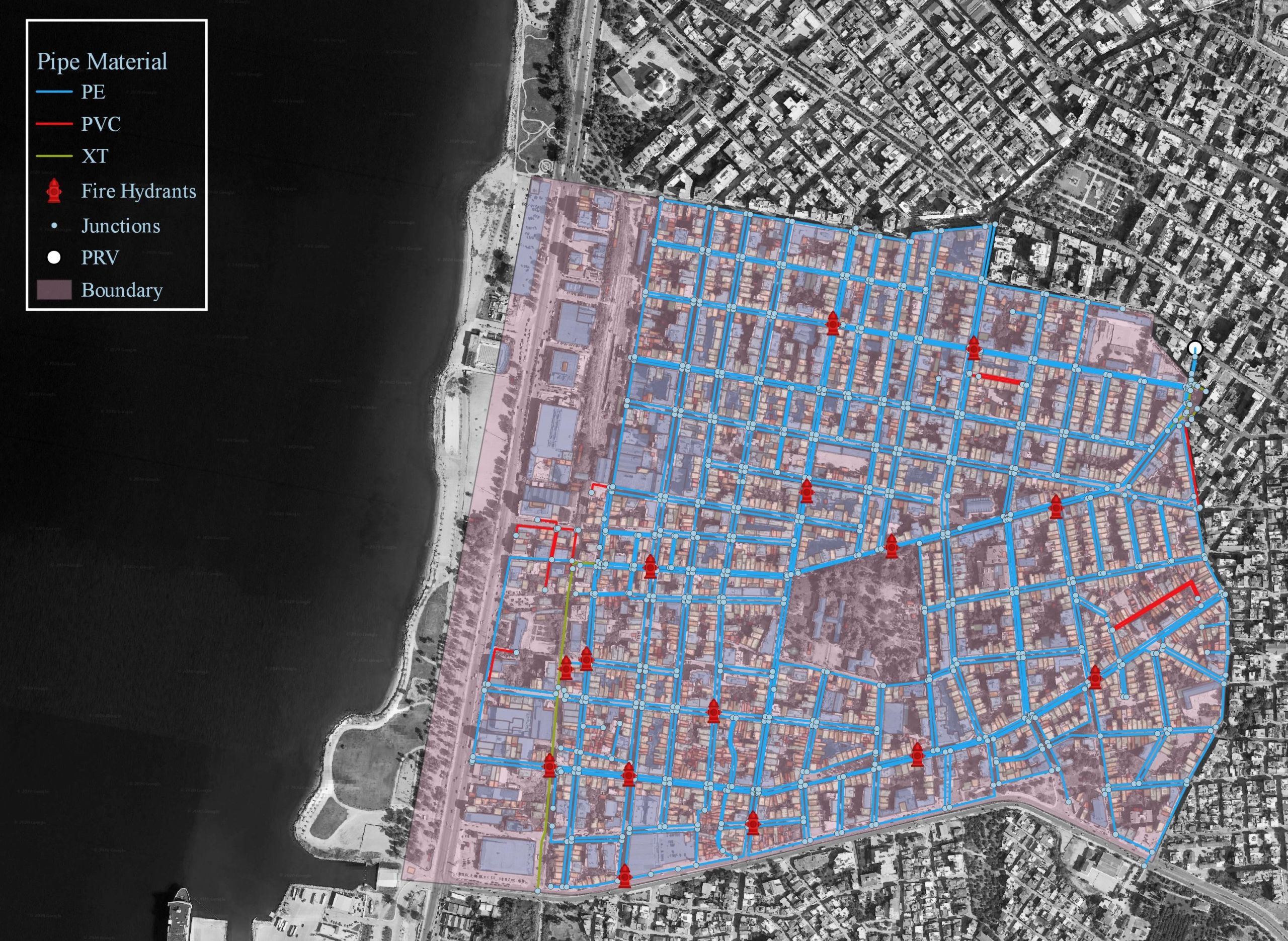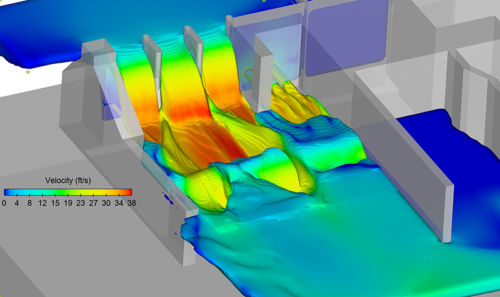|
Introduction to urban water projects (i.e. water distribution, sewage and rainwater drainage networks), historical references. Drinking water quality parameters. Calculation of water demand: water uses, estimation of design population, seasonal and diurnal variation of water demand, water losses, design flows for the delivering and distribution parts of the network. Spatial allocation, sizing and design of drinking water tanks and pressure-adjusting wells. Sizing of water distribution pipes, design of pumping stations, special network devices, methods for hydraulic calculations. Spatial allocation of water demand based on the spatial distribution of population, regular and emergency scenarios of network operation, introduction to computational tools. Design of sewage and rainwater drainage networks: composition of domestic wastewater, sewage networks, combined sewage and rainwater drainage networks, parasitic inflows, estimation of wastewater and rainwater discharges for hydraulic design, hydraulic concepts and approximations for the design and sizing of sewage and rainwater collectors. Calculation methodologies, restrictions on flow characteristics, design of transitional regions. Sewer technology, visiting manholes, sediment deposition, ventilation of wastewater collectors, quantification of hydrogen sulphide production, sewer protection against corrosion.
|
WATER DISTRIBUTION, SEWAGE AND RAINWATER DRAINAGE NETWORKS
| SEMESTER | 8th |
|---|---|
| eclass | https://eclass.upatras.gr/courses/CIV1593/ |
| Details | http://www.civil.upatras.gr/index.php/odhgos/ |
| Instructor | LANGOUSIS ANDREAS |
| LANGUAGE OF INSTRUCTION and EXAMINATIONS | Greek |
| Credits ECTS | 6 |
| Teaching Hours | 4 |
| Erasmus+ | Yes |
| Code | CIV_8435A |
|
The student familiarizes with basic concepts for the design of water distribution, sewage and rainwater drainage networks in urban and suburban areas (i.e. urban water projects). This is done through the analysis and understanding of applicable regulations and concepts, as well as detailed examples and practical applications.
By the end of the course, the student has the necessary knowledge and skills to design and size the individual components of water distribution, sewage and rainwater drainage networks in urban and suburban areas.
|




